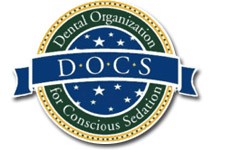Services & Technology
We are pleased to offer the following services and technologies to our patients:
- Preventive & General Care
- Controlling Dental Anxiety
- Advanced Procedures
- Cosmetic Dentistry
- Dental Technology
PREVENTIVE & GENERAL CARE
ORAL HYGIENE CARE
Maintaining good oral hygiene is one of the most important things you can do for your teeth and gums. Healthy teeth not only enable you to look and feel good, they make it possible to eat and speak properly. Good oral health is important to your overall well-being. Daily preventive care, including proper brushing and flossing, will help stop problems before they develop.
In between regular visits to the dentist, there are simple steps that each of us can take to greatly decrease the risk of developing tooth decay, gum disease and other dental problems. These include:
- Eat a balanced diet and limit snacks between meals
- Use dental products which contain fluoride, including toothpaste
- Rinse with a flouride mouth rinse if advised to do so
- Make sure children under 12 drink fluoridated water or take a fluoride supplement if they live in a non-fluoridated area
- Visit your dentist regularly for professional cleanings and oral exams
- Replace your toothbrush every 3-4 months
The following are indications of good oral hygiene:
- Your teeth are clean and free of debris
- Gums are pink and do not hurt or bleed when you brush or floss
- Bad breath is not a constant problem
PREVENTIVE DENTISTRY
Dental Prophylaxis (Preventive Cleaning)
An integral part of maintaining your teeth for life is the removal of plaque and tartar on a regular basis. The frequency of your visit is based upon your individual needs and oral health. During your visit we will update your medical history, do a clinical exam, which includes oral cancer screening and taking the necessary radiographs (x-rays) and review oral hygiene instructions. In other words, we are checking for cavities and monitoring your periodontal (gum and bone) condition.
Periodontal Maintenance
Once a patient receives treatment for periodontal (Gum/Bone) disease and the infection is under control, continuous gum and bone care procedure known as periodontal maintenance should be performed. The frequency of your visit is determined by your overall periodontal condition but normally performed every 3 to 4 months. Such procedure along with good oral hygiene and a healthy diet are necessary to keep periodontal disease from recurring.
Fluoride Treatment
We recommend a fluoride treatment for ages 1 to 18 every prophylaxis appointment. Individual consideration is given to every patient based on cavity risk, water supply and oral hygiene to assess the need for a fluoride treatment. After 18 it is optional depending on the patients home care and clinical condition. We provide fluoride in a gel, rinse or foam format. Then the patient is not allowed to eat, drink or smoke for half an hour after the procedure is done. We also dispense prescription fluoride supplements and toothpastes for patients with moderate to high risk for cavities or have tooth sensitivity.
Sealants
Sealants (BPA free) are a simple procedure in which a tooth-colored or white opaque “coating” is painted onto the chewing surface of the tooth. This is a highly effective way along with good oral hygiene and a healthy diet to prevent the decay of teeth.
Occlusal Guard (Night Guard)
An occlusal guard will interrupt the grinding/clenching process. It is a splint made from clear hard acrylic. The patient wears it to prevent TMJ disorders and also to avoid trauma of teeth, gum, bone, muscle and surrounding tissues.
Mouthguard/Sportsguard
A custom fit athletic mouthguard is recommended for anyone who is involved in contact sports. We have several types depending on age and sport. Name placement and helmet straps are available. The “boil and bite” mouthguards are not as effective as a customized mouth guard in protecting against dentofacial injuries. A properly fitted mouth guard cushions the blow, reduces the severity and incidence of a concussion.
PERIODONTAL (Bone/Gum) DISEASE & GINGIVITIS
Scaling And Root Planing
A non-surgical therapeutic procedure to remove plaque, tartar and diseased root layer off teeth surfaces. During the process hand instruments and / or an ultrasonic instrument is used. This is usually done under a local anesthetic. This procedure removes bacteria that are destructive and dangerous to the attachment of teeth and reduces gum swelling and bleeding. As a result, this procedure along with better home care will prevent further bone loss and ultimately tooth loss. More studies are recently linking periodontal disease with heart and kidney disease, diabetes and other systemic conditions.
Arestin
![]() Arestin is an FDA approved antibiotic, which consists of 1 mg of minocycline. These microspheres are a powder like substance that easily and effectively kill germs when placed around the teeth. It stays working up to 28 days after placement. This is a great adjunct and very effective when placed after the scaling and root planning procedure. It can also be used during the periodontal maintenance phase. For more info please visit www.arestin.com.
Arestin is an FDA approved antibiotic, which consists of 1 mg of minocycline. These microspheres are a powder like substance that easily and effectively kill germs when placed around the teeth. It stays working up to 28 days after placement. This is a great adjunct and very effective when placed after the scaling and root planning procedure. It can also be used during the periodontal maintenance phase. For more info please visit www.arestin.com.
BONDING
Bonding involves adhering composite resin material that is matched to the color of the tooth, to the front of the tooth. This is performed to repair damage caused by decay, to alter the alignment of the tooth, close gaps between the teeth, or for other cosmetic purposes.
First the surface of the tooth is roughened in order to accept the bonding. A gel is applied so the resin will adhere to the surface of the tooth. The composite is then placed on the tooth and the bonding agent hardens with intense light. The last step is shaping and polishing to give a lustrous finish.
CONTROLLING DENTAL ANXIETY
You are not alone by being fearful of your dental visit. There are many people like you. This is normal. We are here to make your dental visit as comfortable and safe as possible.
NUCALM
NuCalm is a patented all-natural stress management technology proven to lower stress and improve sleep quality without drugs. NuCalm safely and rapidly “flips the switch” on stress and creates deep relaxation by mimicking patterns your brain recognizes to help relax. When you are in a deeply relaxed state, your body can heal, recover, and rejuvenate. For more information, please visit www.nucalm.com.
NITROUS OXIDE SEDATION
Nitrous Oxide sedation, also known as “laughing gas” is commonly used to make treatment more comfortable. It is inhaled through a mask that allows you to breathe in the medication and induces a state of relaxation.
ORAL CONSCIOUS SEDATION
This medication can be given to a patient the night before a dental procedure and/or 60 minutes prior to the dental appointment, depending on the severity of the anxiety. Oral sedatives will allow us to perform routine dentistry in a safe and comfortable environment.
GENERAL ANESTHESIA
We can get the services of a dental anesthesiologist. The dental anesthesiologist is a dentist who had additional training of 2-3 years in administering general anesthesia. He will bring all the monitoring equipment to our office. You will be completely put to sleep under the supervision of a paramedic and a dental anesthesiologist. If you choose this option we will provide you with the information necessary to set up your appointment and get you started with your dental needs.
ADVANCED PROCEDURES
DENTAL IMPLANTS
A dental implant is an ideal tooth restoration for people who are missing one or more teeth as a result of injury, periodontal disease, or any other reason. A dental implant is a post that a periodontist or oral surgeon places into the jaw. Once in place and bone surrounding the implant has had time to heal, a replacement tooth is attached to the post. Implants are the best option to replacing your missing teeth other than your own natural dentition.
A lot can be done with dental implants. They can replace an individual tooth or several of them can be used to support a fixed or removable prosthesis.
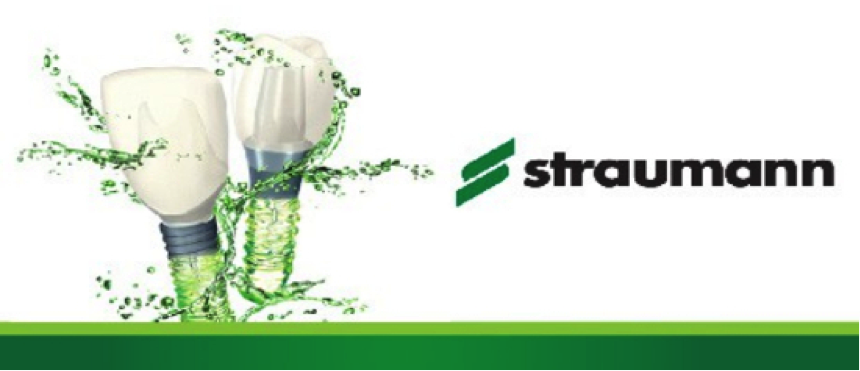

Please click here for more information.
http://www.straumann.us/en/home.html
Let us help you achieve a healthy, more confident and functional smile that will support your quality of living.
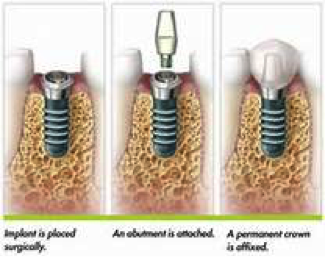

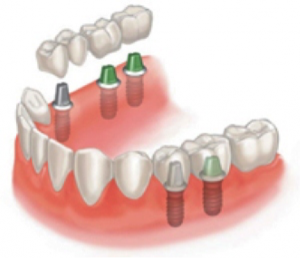

CROWNS AND BRIDGES
Crowns and bridges are used to restore and enhance teeth that are damaged or to take the place of missing teeth. A crown (also referred to as a cap) is used to entirely cover a damaged tooth. A crown not only strengthens a tooth, but it can dramatically improve a tooth’s appearance, shape and alignment.
Crowns may be used to:
- Replace a large filling when there is little tooth structure remaining
- Protect a weak tooth from fracturing
- Restore a fractured tooth
- Attach a bridge
- Cover a dental implant
- Cover a discolored or poorly shaped tooth
- Cover a tooth that has had root canal treatment
A bridge is an ideal method to fill the space created by missing teeth. A bridge is one or more artificial teeth cemented into place using the teeth on either side for support. This is an option for filling the space created by a missing tooth. Bridge work is as much an art as it is an exact science since it replaces a missing tooth both functionally and cosmetically. The materials used may be gold alloys, porcelain bonded to metal alloy, or all ceramic material made to match your natural tooth color. The choice of material depends on requirements for strength, wear, and aesthetics.
It is important that a missing tooth be replaced as soon as possible. If not treated, the teeth surrounding the gap begin to shift inward. Since teeth use their neighbors for support, if one is missing they begin to “fall” and shift into the open spaces. This may worsen the bite because of the changes in pressure and can eventually result in problems with the jaw such as TMJ.
Bridges and crowns are made by first taking an impression of your mouth. The impression is sent to a dental lab where your crown or bridge will be custom made to fit your mouth and match your natural tooth color. A temporary crown or bridge will be placed into your mouth until your permanent crown or bridge is ready and cemented into place.
Bridges and crowns are very durable and can last a lifetime with extra care and good oral hygiene.
TOOTH EXTRACTIONS
Good oral hygiene should always be practiced since the loss of a single tooth can have major impact upon your oral health and appearance. Although dentists will use every measure to prevent tooth loss, there still sometimes necessary occasions when a tooth may need to be extracted. A tooth may need to be extracted for the following reasons:
- Severe decay
- Advanced periodontal disease
- Infection or abscess
- Orthodontic correction
- Malpositioned teeth
- Fractured teeth or roots
- Impacted teeth
After careful examination and treatment, the dentist may advise to have a tooth extracted. Before a tooth is removed, the dentist will take an x-ray in order to understand the shape and position of the tooth and surrounding bone. Based on the degree of difficulty, we may refer you to a specialized oral surgeon.
For a simple extraction, we will first apply a local anesthetic to prevent pain and discomfort. The tooth will be loosened with a tool called an elevator and then removed with dental forceps. Once the procedure is complete, the area may be closed with one or two stitches. We will then provide you with care instructions to alleviate discomfort and ensure proper healing.
ROOT CANAL TREATMENT
Root canal treatment (also referred to as root canal therapy or endodontic therapy) is made necessary when an untreated cavity reaches all the way to this pulp. Treatment may also be needed when deep restorations or trauma to a tooth cause nerve damage. Once the pulp becomes infected, and can begin to eat away at the surrounding bone (this is known as an abscess). If the pulp is infected, not only is it painful but it will require treatment as it cannot heal on it’s own. Symptoms that indicate the pulp has become infected may include sensitivity to hot/cold or sweets, pain, swelling, pain to biting or pressure, and a bad taste in the mouth. However, sometimes no symptoms are apparent and you may be unaware of any problem until a checkup.
A root canal is performed to clean out the infected tooth pulp and disinfect the canals of the tooth. Alternate treatment would be to extract the tooth. Once the infection is resolved, the canal is filled in to prevent any further infection. Usually a core build-up and crown is recommended for restoring a tooth that has undergone root canal therapy.
DENTURES
A denture is a removable replacement for missing teeth and surrounding tissues. There are two types of dentures available, including partial and complete dentures. Partial dentures are used when some natural teeth remain, while complete dentures are used to completely replace all teeth. Dentures are made to resemble your natural teeth so there should be no noticeable change to your appearance. In fact, dentures may even improve your smile!
This restoration method is used to restore your smile and mouth function if all your teeth have been lost. The dentures are custom created to resemble natural teeth and are positioned to take the place of natural teeth. Complete dentures are removable and may require adjustments in order to create a proper fit with the gums and mouth.
A removable partial denture is a device used when one or more natural teeth still remain in the upper or lower jaw. They usually consist of replacement teeth attached go a gum-colored plastic base which is held in place in the mouth. A fixed partial denture acts the same as a removable denture, but it is cemented into place using adjacent teeth for support.
New dentures may feel awkward or loose for the first few weeks until the muscles of your cheek and tongue learn to keep them in place and you are comfortable eating and speaking. Although this may require some practice you will adjust and enjoy the benefits a full mouth of teeth can provide.
COSMETIC DENTISTRY
Cosmetic dentistry includes procedures correct imperfections or enhance the appearance of the mouth. Tooth color, alignment, spacing as well as regularity of the teeth are the characteristics that give the overall appearance. Any of these can be enhanced to provide a stunning new smile.
WHITENING
Tooth whitening is a dental procedure to make teeth whiter and brighter, and therefore more attractive. Vital teeth whitening is a safe and relatively painless procedure that is ideal for most patients. Our office offers two methods of whitening: Zoom Chairside Whitening and Zoom Take Home custom tray whitening.


Most people born in the 1950’s and 1960’s and have taken Tetracycline as an antibiotic to treat an infection developed a permanent stain on their teeth. The Tetracycline stain varies in intensity and location on the teeth depending on the time and dosage of the antibiotic that was taken with respect to teeth development. In the past the only treatment to get rid of the heavy grey or yellow Tetracycline discoloration was to cover the teeth with crowns and/or veneers. We can and have lightened Tetracycline staining to make them hardly noticeable. So if you are embarrassed with your smile or simply want whiter teeth let us help you achieve the confident smile that you are looking for.
Custom tray whitening is a less expensive whitening treatment that you can use while in the comfort of your own home. We will first take an impression of your teeth to create a customized clear whitening trays for you to wear. Within a few days your trays will be ready to be picked up and we will show you how to apply the special whitening material to the trays. The whitening gel trays can be worn 15-60 minutes once or twice a day depending on the material used. This treatment can also be used at your convenience as a touch up to maintain your new smile. Please check out the pictures under the gallery section.
INVISALIGN
![]() FDA approved Invisalign is the “invisible” way to straighten your teeth without wearing conventional metal braces. Invisalign uses a series of clear, removable custom-made aligners to move your teeth. Because you remove your aligners before you eat and drink, there are no food restrictions or problems with flossing or brushing. This technology is also more comfortable, avoiding the mouth abrasions that can be caused by the metal and wires of conventional braces. And this technology is also more convenient, since you are likely to spend less time in the doctor’s office getting adjustments.
FDA approved Invisalign is the “invisible” way to straighten your teeth without wearing conventional metal braces. Invisalign uses a series of clear, removable custom-made aligners to move your teeth. Because you remove your aligners before you eat and drink, there are no food restrictions or problems with flossing or brushing. This technology is also more comfortable, avoiding the mouth abrasions that can be caused by the metal and wires of conventional braces. And this technology is also more convenient, since you are likely to spend less time in the doctor’s office getting adjustments.
Invisalign uses 3-D computer imaging technology to design the complete treatment plan, from the initial teeth positioning to the desired final positioning. This 3-D imaging allows you to preview the final positioning of your teeth before you start treatment. Custom-made aligners are created based on the imaging information. Each of these aligners moves teeth incrementally and is worn for about 2 weeks. Typically, you will visit your dentist once every 6 weeks for “progress reports.” Not every situation can be treated with Invisalign, so call the office to get an evaluation to see if you can be helped with this new technology. Click here to learn more about Invisalign.
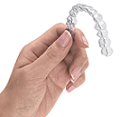
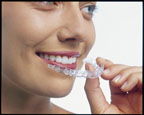

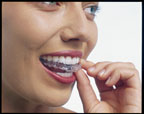

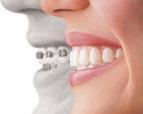

VENEERS
Veneers are a dental procedure in which a covering is placed over the outside (visible area) of the tooth. Veneers are usually only applied to the part of the tooth that is visible when talking or smiling. The procedure can be direct or indirect.
The direct technique usually involves placing composite resin on the outside of the tooth using bonding. This method is usually referred to as bonding.
The indirect technique usually involves two appointments because the veneers will be fabricated at a dental laboratory. At the first appointment the teeth are prepared, impressions taken, and the teeth are given a temporary covering. In two to three weeks the veneers are back from the laboratory, the temporaries are removed and the veneers are bonded to the teeth. The laboratory fabricated veneers are usually made using porcelain or pressed ceramic and are very aesthetic.
The advantage of veneers versus crowns is that much less tooth material is removed, and the procedure is generally less uncomfortable. Veneers are recommended for teeth that have large fillings or little tooth structure.
BOTOX
Botox® is the trade name for Botulinum Toxin, a form of a medically modified protein. It is used to calm down the intensity of the muscle.
Botulinum Toxin (Botox) has important clinical uses as an adjunct in facial pain and bruxism cases for patients with chronic TMJ and orofacial pain. Botulinum Toxin (Botox) is also used to complement esthetic dentistry to soften wrinkles as a minimally invasive alternative to surgery.
Botulinum Toxic may also be used for esthetic purposes, making you look younger. The areas typically treated with Botulinum Toxin (Botox) for wrinkles are the forehead, between the eyes (glabellar region), around the corners of the eyes (crow’s feet) and around the lips (smokers lines or gummy smile). There is no loss of sensory feeling in the muscles. Once the motor nerve endings are interrupted, the muscle cannot contract, causing wrinkles in the skin to smooth. The effects of Botulinum Toxin (Botox) last approximately three to four months, at which time the patient will require retreatment.
The most common side effects of Botulinum Toxin injections are bruising, redness, and swelling. Other, rare side effects are possible and will be reviewed by the treating physician. To avoid adverse reactions/results, do not manipulate the treated area for 2 hours after injections and maintain an upright position. Other than that there is virtually no down time.
DERMAL FILLERS
Dermal fillers smooth out fine lines or fill in deep set wrinkles. We use dermal fillers to achieve a more relaxed and smooth facial appearance while still having the freedom of expression. As skin ages, it begins to lose collagen filled with hyaluronic acid (HA). Collagen and HA add structure and volume to the face, therefore a lack of HA causes the skin to sag and wrinkle.
Dermal fillers are smooth injectable gels made from naturally occurring hyaluronic acid. Dermal fillers add volume to weakened facial features and can stimulate collagen growth. Each dermal filler is unique in its own way but similar in two. First, they plump skin and gently lift it to restore collagen loss due to the normal aging process. Secondly, dermal fillers motivate the body to create its own natural collagen and restore your face to a more natural, youthful appearance.
Dermal fillers approved by the FDA are minimally invasive and very safe. As with any procedure, there are possible risks, the most common being post-procedure bruising and swelling which are usually very minimal and resolve quickly.
Dermal filler treatments typically take 20-40 minutes and the amount of dermal filler needed will depend on volume loss and the areas you would like to restore to its natural beauty. You will see results immediately after treatment.
DENTAL TECHNOLOGY
In order to provide nothing but the best to our patients, our office uses state-of-the-art technologies in all our procedures. These new technologies allow us to treat dental cases with extreme precision, detect dental concerns at early stages, and provide stunning and customized restorations. When you visit our office you can be confident that you are receiving on the finest and most advanced in dental care. We proudly offer and use the following advanced equipment:
VIZILITE PLUS WITH TBLUE 630
 ViziLite Plus with TBlue630 is an oral lesion identification and marking system that is used as an adjunct to the conventional head and neck examination. It is comprised of a chemiluminescent light source (ViziLite) to improve the identification of lesions and a blue phenothiazine dye to mark those lesions identified by ViziLite. ViziLitePlus with TBlue630 is designed to be used in a patient population at increased risk for oral cancer.
ViziLite Plus with TBlue630 is an oral lesion identification and marking system that is used as an adjunct to the conventional head and neck examination. It is comprised of a chemiluminescent light source (ViziLite) to improve the identification of lesions and a blue phenothiazine dye to mark those lesions identified by ViziLite. ViziLitePlus with TBlue630 is designed to be used in a patient population at increased risk for oral cancer.
Each year, more than 30,000 Americans are diagnosed with oral cancer. Thanks to an amazing new technology, ViziLite, dentists and hygienists can quickly and painlessly screen for oral cancer. With an early diagnosis, oral cancer has a 90-percent cure rate.
Did you know that oral cancer steals the life of one American every hour? We don’t hear much about oral cancer, but 34,000 patients will be diagnosed in 2007. Only half of patients diagnosed with oral cancer will survive longer than five years. Because it is often detected in the later stages, oral cancer’s mortality rate is higher than that of cervical cancer, Hodgkin’s disease, brain, liver, kidney, or ovarian cancer. Treatment for oral cancer often causes disfiguration and lessens the patient’s quality of life.
Thanks to an amazing new technology, ViziLite, dentists and hygienists can quickly and painlessly screen for oral cancer. ViziLite is an identification and marking system that detects tissue abnormalities and is used in combination with traditional visual exams.
All adults should have an annual ViziLite exam because a quarter of oral cancer victims are non-smokers, don’t drink, and have no lifestyle factors to heighten their oral cancer risk. Men over 40 and women between the ages of 20 and 40 are the most prone to the disease. Patients with lifestyle risks, including any tobacco use, daily alcohol consumption, viral infections, autoimmune deficiencies like HIV, and diabetes, may need more frequent evaluations.
The screening involves a few simple steps. First, you rinse thoroughly with a cleansing solution. Then, your dentist dims the overhead lights and examines your mouth using the ViziLite wand. If ViziLite finds a problem area, the spot will become illuminated and appear distinctly different from the surrounding normal tissue.
While all of this information sounds disheartening, if oral cancer is found and treated in the early stages, a patient has an 80 to 90-percent chance of survival. Ask your dentist about whether you could benefit from an oral cancer screening that includes ViziLite. Click here to learn move about Vizilite.
DIGITAL IMAGING SOFTWARE
We use digital imaging software in our office, which allows us to take a digital picture of you and use our imaging system to predict how a particular treatment or cosmetic procedure would change the appearance of your teeth. This software is beneficial for patients who are considering cosmetic procedures but are not sure if they’re ready for dramatic changes. Digital imaging also allows us to document your dental case and procedures very well.We take digital images of your face, teeth and smile to provide us with a permanent dental record and to provide a visual documentation of treatment.
INTRAORAL IMAGING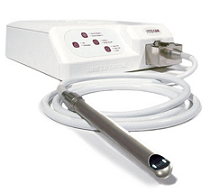
We use small cameras about the size of a pen, called intraoral cameras, to help clearly see the condition of your teeth and gums. With this advanced technology we can zoom in on small diseased areas, cracks, chips and worn metal fillings with extreme precision. The full-color images taken with the intraoral camera are sent to a computer screen so we can clearly see and diagnose dental problems much earlier than with traditional dental technology. Because images are displayed on our screens, patients will also be able to see areas being worked on and are able to gain a better understanding of dental procedures being performed.
ELECTRONIC CLAIM PROCESSING
Our office utilizes electronic claims processing. This means that rather than sending your dental claim through the mail, it is sent electronically to your insurance company with the click of the button. By filing your claim electronically, information is submitted more efficiently and with fewer errors.This benefits our patients because the turn around time on claims is faster and fewer claims are returned or denied. We are happy to submit your dental claims to your insurance company on your behalf.

